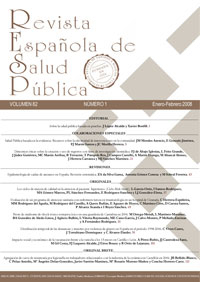Temporary Distribution of Reports and Murders because of Partner Violence during the Period 1998-2006, Spain
Abstract
Background: Intimate Partner Violence (IPV) has received special attention in the spanish political agenda. Despite the importance of developed interventions, empirical evidence about their effectiveness is scarce. The aim of this study is to explore the temporary distribution of Intimate Partner Violence (IPV) reports and murders and to identify possible changes in the risk of dying and reporting by IPV from the Spanish law against gender violence of December of 2004. Methods: We performed a descriptive study based on stadistics of The Womans Institute and The Divorced and Separated Women Federation. Calculations: IPV mortality and reports rates by years and periods around the law (1998-2004 vs. 2005-2006); Poisson Regression; and, Epidemic index by months Ratio between the actual number of IPV murders and reports in a given month and the median number of cases in the same month in the five preceding years and underlying epidemic index annual average of the scores of the epidemic index of reports and murders. Results: The epidemic index trends permit us to observe that the problem has decreased since 2005. Nevertheless, the posibility of reporting IPV between 2005 and 2006 is 1.6 times upper that between 1998 and 2004. The risk of dying by this cause does not show statistically significant changes. Conclusion: The posibility of reporting IPV has been increased in Spain throughout the time. However, the risk of dying stays. Although still it is soon for the evaluation of the impact of the law in this epidemic, we could say that its effectiveness for the reduction of IPV mortality seems limited.Downloads
Published
2008-03-14
Issue
Section
ORIGINALS

